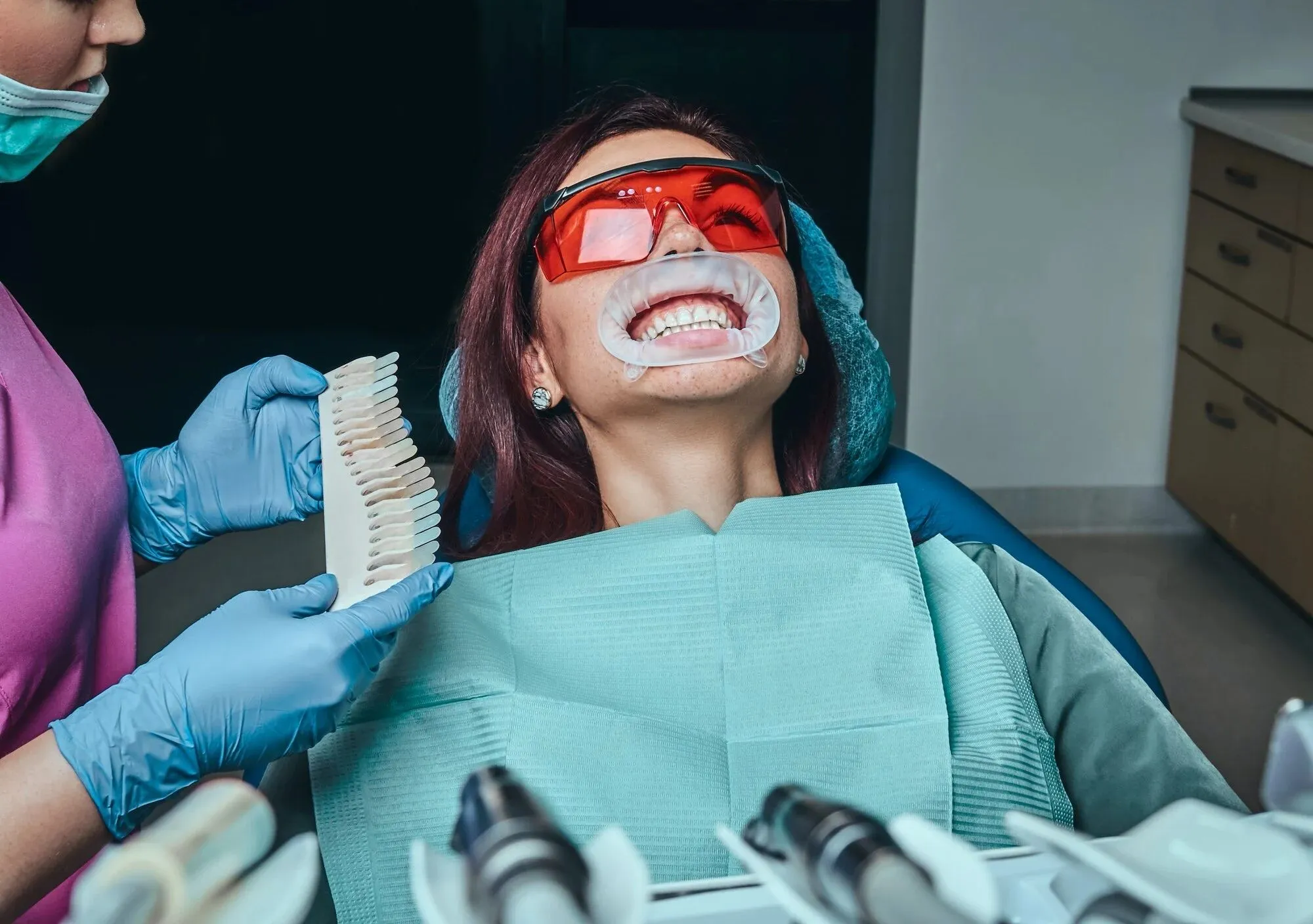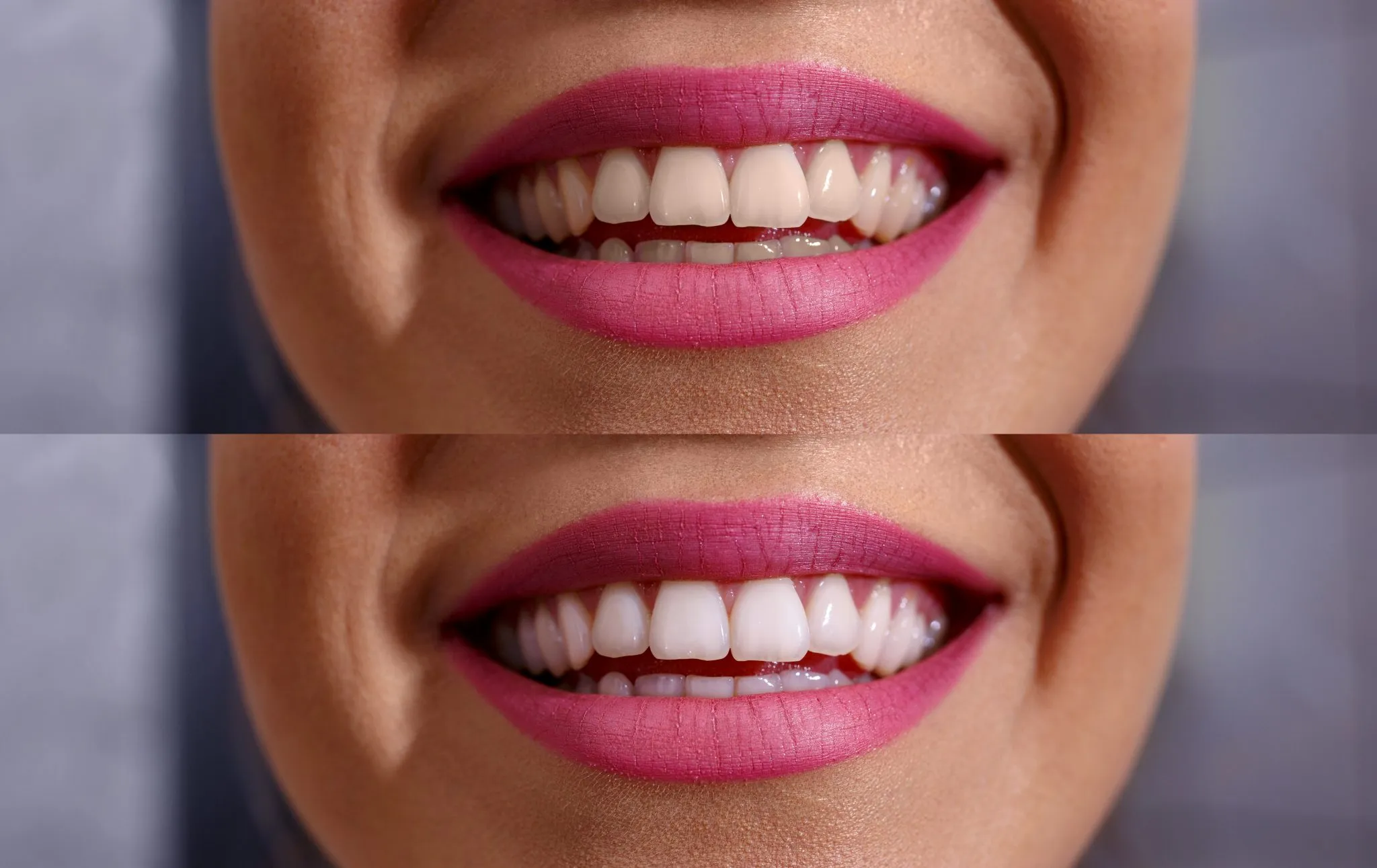Top 5 Teeth Whitening Facts You Need to Know
Teeth whitening is a popular cosmetic dental procedure, but how much do you really know about it? Beyond the promise of a brighter smile, understanding the facts can help you make informed decisions about your oral health and the best way to achieve the results you desire. From the different methods available to the potential side effects, this guide will provide you with five key facts to help you navigate the world of teeth whitening effectively. This knowledge will empower you to make choices that are right for your unique needs, helping you achieve a confident, radiant smile while protecting the health of your teeth and gums.
What is Teeth Whitening?
Teeth whitening, also known as bleaching, is a cosmetic dental procedure designed to lighten the color of your teeth. It works by removing stains and discoloration, resulting in a brighter and more youthful appearance. The process involves the use of bleaching agents, typically hydrogen peroxide or carbamide peroxide, which penetrate the enamel and break down the stain molecules. This process doesn’t just clean the surface; it alters the internal structure of the tooth, making it appear whiter. Teeth whitening can address discoloration caused by factors such as aging, genetics, diet (coffee, tea, red wine), smoking, and certain medications. The effectiveness of teeth whitening varies depending on the severity of the stains and the chosen method.
Different Types of Teeth Whitening

There are several approaches to teeth whitening, each with its own set of advantages and considerations. Two of the most common types include in-office and at-home whitening treatments. In-office whitening, performed by a dental professional, typically offers the most dramatic results in a shorter amount of time. These treatments use higher concentrations of bleaching agents, often combined with a special light or laser to accelerate the whitening process. At-home whitening options include custom-fitted trays provided by a dentist, as well as over-the-counter products like whitening strips and toothpastes. At-home methods offer greater convenience and are usually less expensive but require more time to achieve noticeable results. Your dentist can help you determine which method suits your needs and oral health situation best, providing personalized guidance and ensuring safe, effective treatment.
In-Office Teeth Whitening
In-office teeth whitening is a professional procedure performed in a dentist’s office, offering the quickest and most effective way to achieve a brighter smile. The dentist applies a high-concentration bleaching gel to the teeth, often using a special light or laser to enhance the bleaching action. This process typically involves multiple sessions, each lasting about an hour, during which the gel is applied and removed. In-office whitening provides immediate results, with teeth often becoming several shades lighter after just one visit. The dentist can monitor your progress and ensure the safety of the procedure, minimizing the risk of sensitivity or other side effects. While in-office whitening is more expensive than at-home methods, its speed and effectiveness make it a popular choice for those seeking a rapid transformation.
At-Home Teeth Whitening
At-home teeth whitening offers a convenient and cost-effective way to brighten your smile, typically involving custom-fitted trays provided by a dentist or over-the-counter products. Your dentist can provide you with custom trays and a bleaching gel, which you wear for a specified amount of time each day, as instructed. Over-the-counter options include whitening strips, toothpastes, and mouthwashes that contain lower concentrations of bleaching agents. While at-home methods take longer to show results compared to in-office treatments, they provide flexibility and are generally more affordable. Following the instructions carefully and consulting with your dentist ensures safe and effective results, allowing you to gradually achieve a brighter smile at your own pace. It’s a great option for those seeking a gradual improvement in their teeth’s appearance.
The Effectiveness of Teeth Whitening

The effectiveness of teeth whitening varies depending on the method used and the type of stains present. In-office whitening, using stronger bleaching agents, typically yields the most dramatic results in a shorter time. At-home methods, while less potent, can still provide significant improvement with consistent use over several weeks. The degree of whitening depends on the severity and type of staining. Extrinsic stains, those on the surface of the enamel caused by food, drinks, and smoking, often respond well to whitening treatments. Intrinsic stains, which are deeper within the tooth structure, may require more aggressive or multiple treatments to achieve the desired effect. It’s important to consult with your dentist to determine the best whitening method for your individual needs and to set realistic expectations about the results.
How Long Does Teeth Whitening Last?
The longevity of teeth whitening results varies, typically lasting from several months to up to three years, depending on various factors. Your lifestyle and habits play a significant role in how long your whitened smile will last. Consuming stain-causing foods and drinks, such as coffee, tea, red wine, and berries, can gradually re-stain your teeth. Smoking and other tobacco products can also diminish the whitening effects more quickly. Regular dental check-ups and professional cleanings can help maintain your results. To extend the effects of your whitening treatment, you can consider touch-up treatments at home or in the dentist’s office and practice good oral hygiene, including brushing and flossing regularly.
Factors That Affect Teeth Whitening Results
Several factors can impact the effectiveness and longevity of teeth whitening treatments. The type and severity of stains play a critical role; extrinsic stains often respond better than intrinsic ones. The initial shade of your teeth also matters; some individuals have naturally darker teeth, which may require more intensive treatment. Your oral hygiene habits, including brushing, flossing, and regular dental check-ups, significantly influence the results. Certain dental conditions, such as fillings, crowns, and veneers, will not whiten with bleaching agents. Additionally, the concentration of the bleaching agent used, the duration of the treatment, and the individual’s enamel porosity contribute to the outcome. Consulting with a dentist helps you understand your specific circumstances and what to expect from teeth whitening.
Teeth Whitening Side Effects

While teeth whitening is generally safe, some side effects can occur. The most common include temporary tooth sensitivity and gum irritation. These side effects are usually mild and resolve shortly after treatment. Severe or persistent side effects are rare but can indicate an issue that requires professional attention. It’s important to follow your dentist’s instructions carefully and to use products as directed to minimize the risk of side effects. If you experience significant discomfort or any adverse reactions, consult your dentist promptly. They can assess the situation and recommend appropriate solutions or adjust the treatment plan as needed.
Sensitivity and Discomfort
Tooth sensitivity is a common side effect of teeth whitening, especially with stronger bleaching agents. You may experience a temporary increase in sensitivity to hot or cold foods and drinks. This sensitivity usually subsides within a few days after the whitening treatment is complete. To manage sensitivity, your dentist may recommend using a toothpaste designed for sensitive teeth, which contains ingredients to help block the nerve endings. Avoiding extremely hot or cold items can also help minimize discomfort. If the sensitivity is severe or prolonged, your dentist may adjust the treatment plan, such as reducing the concentration of the bleaching agent or shortening the application time.
Gum Irritation
Gum irritation is another potential side effect, often resulting from contact with the bleaching agent during the whitening process. The gums may become inflamed, red, or tender. This irritation is typically mild and resolves within a few days after treatment. To minimize gum irritation, dentists often use protective barriers, such as rubber dams or gels, to shield the gums from the bleaching agent. Following your dentist’s instructions carefully and avoiding overexposure to the bleaching product can help reduce the risk. Rinsing your mouth with water or a saline solution can also alleviate discomfort. If gum irritation persists or worsens, consult your dentist for advice.
The Cost of Teeth Whitening

The cost of teeth whitening varies significantly depending on the method chosen and the dentist’s fees. In-office whitening tends to be the most expensive, due to the professional time, equipment, and stronger bleaching agents used. At-home whitening kits, whether provided by your dentist or purchased over-the-counter, are generally more affordable. The cost can also depend on the number of treatments needed and the specific products used. When considering teeth whitening, it’s important to factor in the overall cost, including any follow-up treatments or maintenance needed to maintain the results. Checking with your dental insurance provider can help determine if any portion of the cost is covered. It’s always best to discuss the cost with your dentist before starting the procedure.
Teeth Whitening Alternatives
If teeth whitening isn’t the right choice for you, or if you’re looking for alternative ways to brighten your smile, several options are available. Professional teeth cleaning can remove surface stains and plaque, which may improve your teeth’s appearance. Veneers and dental bonding are cosmetic procedures that can correct the color and shape of your teeth. Veneers involve thin shells of porcelain that are bonded to the front of your teeth, while bonding uses a composite resin to reshape or color your teeth. Over-the-counter whitening toothpastes and mouthwashes offer a more gradual approach to brightening teeth. Consulting with your dentist is essential to determine the most suitable alternatives for your specific needs and goals. They can evaluate your oral health and recommend a treatment plan that will help you achieve a radiant smile.
